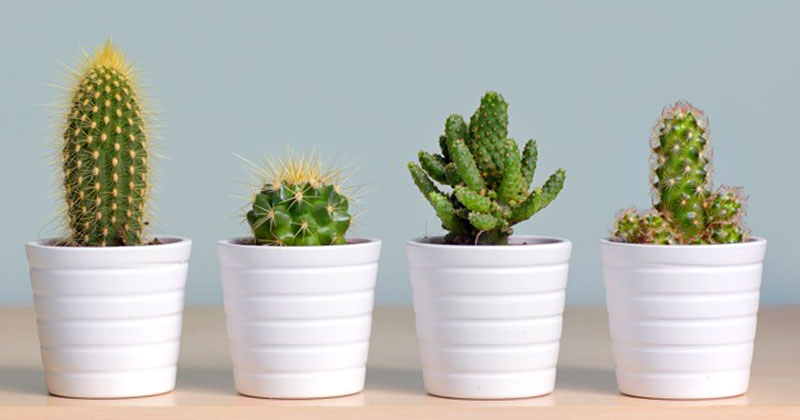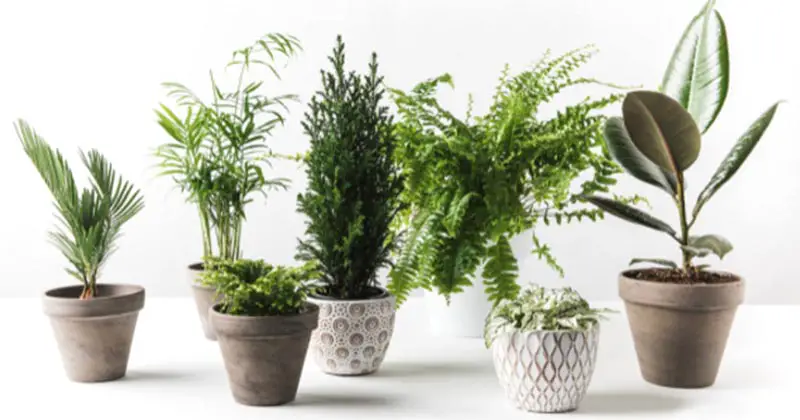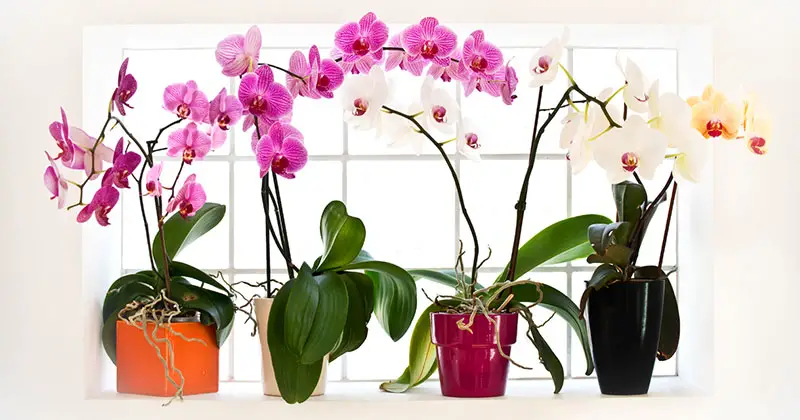It is difficult to imagine a cozy home without a single living plant. Blooming or decorative leafy, fluffy or thorny, huge and miniature: they cheer us up, decorate the interior and saturate the air with oxygen. Indoor plants and flowers are an incorrigible weakness of almost all women. “I have a holiday: the monstera has started a new leaflet!” “U-and-and-and, you have such a beautiful begonia, will you pinch off a shoot for me?”, “I saw such a ficus yesterday, I don’t sleep for three nights now I want myself.” Sound familiar? Yes, such dialogues can be heard wherever two or more women gather. And this “disease” of ours does not need treatment, but on the contrary, it is one of the most wonderful hobbies in the world!
Well, we collected shoots for rooting, bought flowers in the store, and then bam: where to plant? Cut off plastic bottles? No, no, not that. That’s why they are flowers to decorate the house, and not vice versa. And their beauty is best emphasized with a properly selected flowerpot.

The modern variety of pots is capable of not only pleasantly surprised but also rather puzzling. After all, as some outstanding thinker would say: you can do 3 things endlessly look at a burning fire, listen to the murmur of a stream, and choosing pots for indoor plants.
choosing pots for indoor plants
If you want to enjoy the selection process for choosing pots for indoor plants, be sure to take the following tips into account.
What is the difference between a planter and a pot?
Vases (or pots) are intended for direct planting of plants. They should be practical and convenient for the development of the root system, as well as – have one or more holes on the bottom. This important detail will not allow water to stagnate, which will exclude the possibility of root rot, the growth of pathogenic bacteria and fungi. Also, a hole in the bottom of the pot allows the roots to “breathe” and absorb moisture from the pan during so-called “bottom watering”.
The planter was originally invented for decorating nondescript flowerpots. Translated from French, the word means “hidden pot”. A classic flower pot is, in fact, a beautiful container into which a flowerpot with a plant is immersed. It has no holes and requires daily draining of excess water. Modern flower pots can be not only elegant, but also functional: there are many models in which there is a “built-in” vessel for planting a flower. It is also worth remembering that some manufacturers may confuse names, unfairly calling pots pots and vice versa.
Here is answer to How To Care For Houseplants While On Vacation?
How do you know what size pot to use?
The “the more, the better” principle does not work here. We want to have a spacious apartment, a wide bed, a room with high ceilings, and we often subconsciously select disproportionately huge flowerpots for our flowers. “I’ll transplant my favorite cactus into a new spacious“ house ”, wow, how good and comfortable it will be here, it will immediately grow, it will bloom …”. And as a result, the unfortunate plant will stop growing altogether, wrapping its roots around the dimensionless bucket in which the baby was placed.

Stop. We will rewind the film and try to choose a pot that is convenient for the plant.
As strange as it may sound, most plants are still more comfortable in small pots. Balsams, pelargoniums and other blooming in an overly large flowerpot may stop blooming altogether. How can this be prevented?
Visually evaluate the plant. For tall ones, with spreading large leaves, larger flowerpots are suitable. For miniature or small flowers small to medium sizes. An approximate formula to help you make your choice:
The pot should be 1/3 the height of the plant.
The proportions of the flowerpot: diameter – about 2/3 of its height.
- If you plan to divide the root system, pick up several flowerpots that will be smaller in size than the previous one.
- Each next pot should be no more than 1.5-2 cm larger than the previous one.
- For fast-growing flowers, you can pick up a flowerpot 3-4 cm larger than the previous one.
- When reusing, be sure to disinfect and dry the flowerpot.
Want to know about are earthworms good for indoor plants?
plastic vs ceramic pots
For a long time, people have used ceramic vessels in everyday life: starting with simple terracotta pots, and ending with highly artistic vases, which can now be found in expensive collections and the best museums. Such items are made by hand from natural materials, and, accordingly, are more expensive than their synthetic counterparts. Modern technologies allow you to create a wide variety of types of plastic flowerpots. What material should you give preference to?

There is no definite answer to this question, it all depends on your preferences. Both plastic and ceramics have a lot of advantages, so the eternal “battle” between them is always doomed to a “draw”.
The advantages of plastic flowerpots:
Ease. Due to the low weight of plastic products, moving them from place to place will require much less effort than ceramic ones. This is especially important when you need to move a large flowerpot with a tall ficus or palm trees, which already weighs a lot, given the mass of the substrate and the plant itself.
- Price. Plastic flowerpots are inexpensive and available to everyone: even if you need to transplant several plants at once, buying plastic products will not hit your wallet.
- Strength. Plastic pots are not as fragile as ceramic and glass pots.
- Easy to care for. Plastic flower pots are easy to clean and dry quickly.
The advantages of ceramic flowerpots:
- Naturalness. Ceramic flower pots are made of natural materials that have a pleasant texture. Non-glazed pots have a positive effect on air and moisture exchange, creating an ideal microclimate for plant development.
- Aesthetics. Ceramic products look expensive and elegant. They can serve not only as an accessory for planting a plant, but also as a leading soloist item in an interior ensemble.
- Environmental friendliness. During use, ceramics fills the home with a pleasant atmosphere, and upon completion of use, it is easily disposed of without harming the environment.
Take a look at All About Drainage For Houseplants.
Summery
Knowing the basic secrets of choosing pots for indoor plants, do not forget about the most important rule always rely on your own taste and intuition. After all, it is you who have to admire and take care of your home flower garden every day. Therefore, be sure to choose not only “comfortable” flowerpots, but also those that you like. After all, what’s the difference with what it will be combined: with wallpaper, curtains or upholstery of chairs? The main thing is that the design of the flowerpot is pleasing to the eye and brings aesthetic pleasure.
